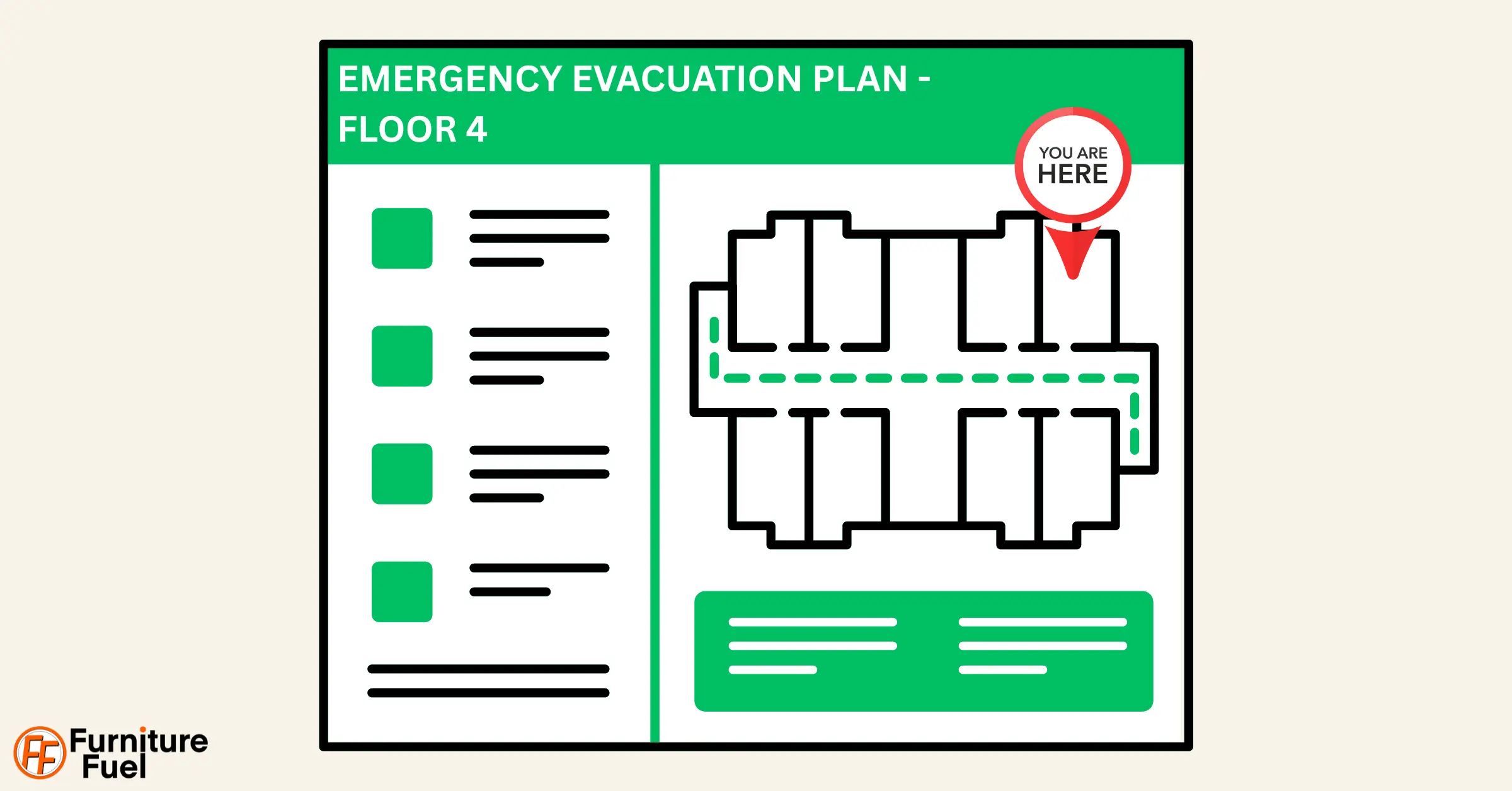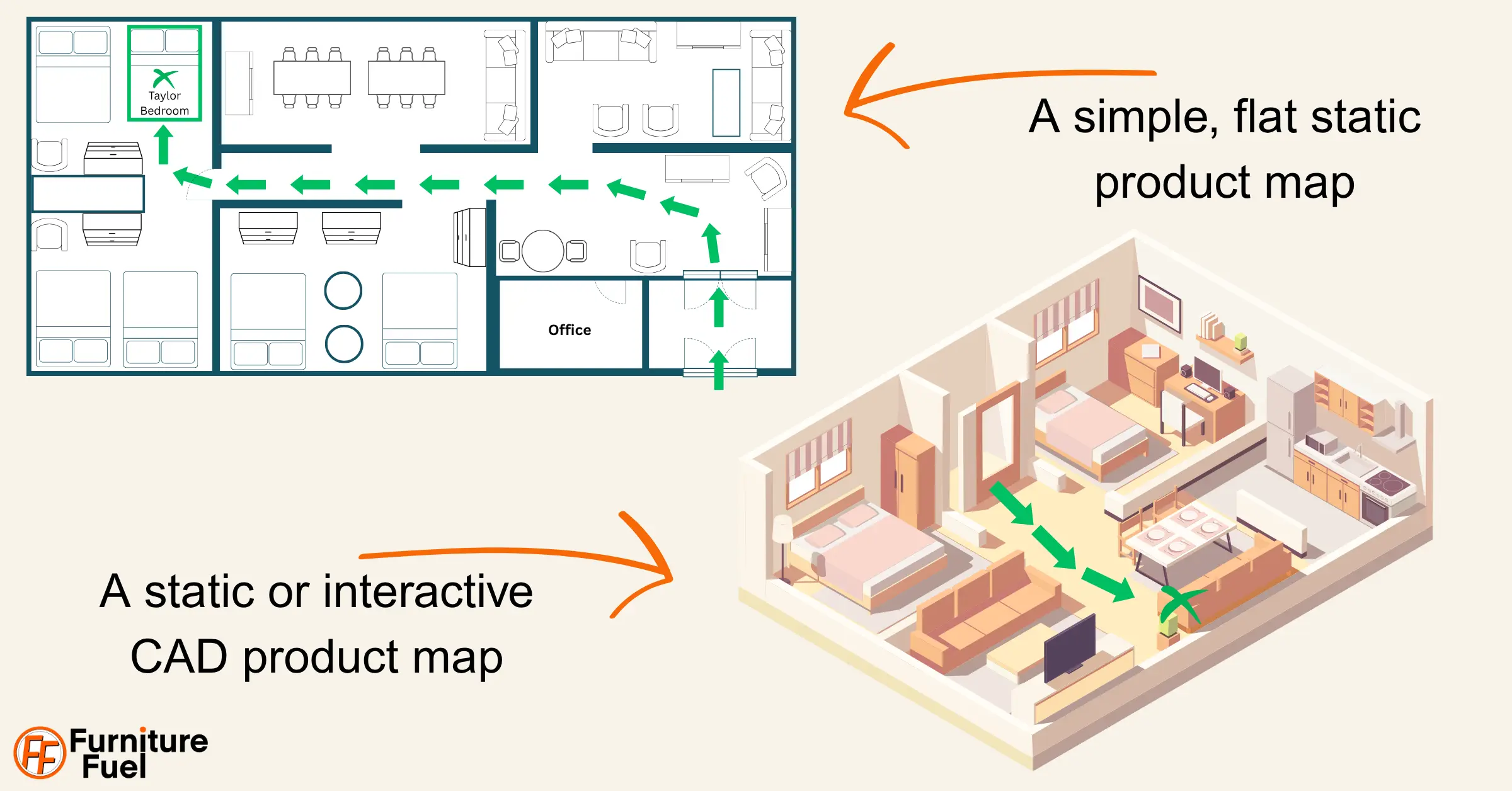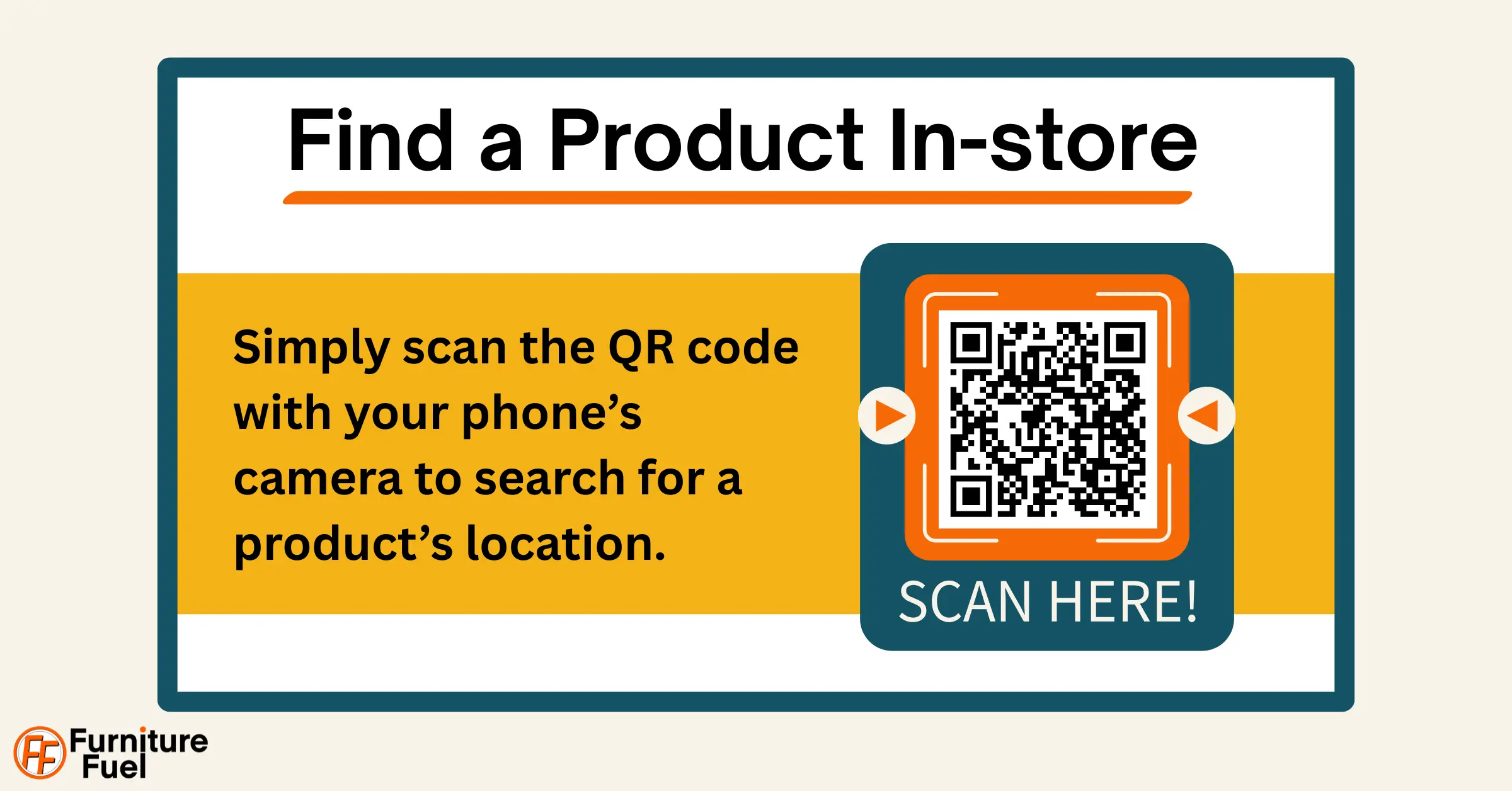From Screen to Sofa: The Product Treasure Map
Jack Young
- Last Updated: 6 July 2025
Table of Contents
TLDR - Core Summary: Guiding Customers from Screen to Shop
A “treasure map” for your in-store products helps customers quickly find the products they’ve researched, reducing frustration and streamlining their path to purchase. The map respects the customer’s time, enhances their in-store journey, and allows salespeople to focus on value-added interactions. Contrary to the belief that guided navigation kills browsing or upselling, a product map actually keeps buyers confident and engaged, supporting both customer satisfaction and sales growth.
The Inspiration Behind the Product Map
We’ve all likely seen one. That little glow-in-the-dark diagram on the back of a hotel room door, or on the wall of an office building—the emergency evacuation exit map. Clear, concise, and essential when you need to know exactly where you’re going.

But what if your furniture store had a similar map? Not for emergencies, but for discoveries. A map that saves your customers’ time and transforms a shopping trip into a genuine treasure hunt.
The Hidden Problem: Lost Customers and Wasted Time
Think about your customers. They’ve likely browsed your carefully chosen collections online—perhaps on their way to work or curled up on their existing (soon-to-be-replaced!) sofa. They’ve seen a few pieces they love, dreamt about how they’d look in their home, and now… they’re ready to see them in person.
They arrive at your showroom, full of anticipation. But then what?
- Do they wander aimlessly, squinting at labels, hoping to stumble upon that perfect sofa?
- Do they have to track down a busy sales assistant just to ask, “Where are your mattresses?”
- How much time do they waste, and how much enthusiasm drains away, just trying to navigate your shop?
- And will they even find the product on display?
This friction is a silent killer of sales. In a world where instant gratification is the norm, making your customers play hide-and-seek with your furniture is costing you time, money, and valuable goodwill.
Your Solution: A "Treasure Map" That Builds Anticipation
A simple map on your website that visually shows where specific furniture items or collections are located within your showroom isn’t just a gimmick. It’s an invitation to your customers. It turns browsers into buyers and visits into discoveries.
It Deeply Respects Customer Time
The Problem: Customers have limited time and a low tolerance for frustration.
The Benefit: A map allows them to plan their visit with precision. They can pinpoint exactly where to go for the armchair they saw online, or the dining set they’re keen to compare. It shouts, “We value your time, and we’ve made this easy for you.”
Imagine a customer finding their dream armchair online. With your treasure map, they can see it’s located in the ‘Living’ section, near the large window displays. No more wandering the entire showroom, losing precious minutes or, worse, losing interest.
It Enhances the "Un-shopping" Experience
The Problem: Physical stores can be overwhelming if not navigated effectively.
The Benefit: This map transforms the visit from a chore into an interactive journey. It builds anticipation! Customers arrive feeling informed and excited, rather than daunted. It’s like getting the coordinates to the exact spot where their next beloved furniture piece awaits. The journey through the store becomes part of the discovery, not just a navigation challenge.
A customer arriving at your showroom could feel overwhelmed by the size and variety. With the product map, they confidently navigate straight to where to product is they saw online, turning what could have been a stressful search into an exciting discovery.
It Drives Intentional Footfall
The Problem: Getting online browsers through your doors is a constant battle.
The Benefit: Offering this unique value—the promise of saving time and making their visit effortlessly efficient—is a compelling reason to make the trip. It’s an explicit invitation.
Seeing exactly where that specific mattress or bedroom set is located online provides a pre-planned reason to visit, knowing their specific interest is easily accessible, and they won’t waste their day.
It Optimises Your Expert Staff’s Time
The Problem: Your sales team often spends valuable time giving directions, rather than selling or providing deeper product knowledge.
The Benefit: With customers empowered to self-navigate, your staff can focus on higher-value interactions—answering detailed questions, discussing customisation options, demonstrating features, and closing sales.
Fewer “Where are your wardrobes?” questions mean more time for your team to discuss storage solutions, material durability, or interior design ideas, elevating the customer experience.
How to Implement a Product Treasure Map
Implementing your own product treasure map might sound complex, but it doesn’t have to be.
The simplest way is to have a static image on your product page that shows the layout of your store, with an ‘X’ marking the specific item.

These simple drawings are a low-cost way to test whether the concept improves the customer experience and increases sales before making a larger investment. However, be mindful of your brand positioning—if you’re a premium retailer, flat or basic visuals might not reflect your brand’s quality. In that case, consider using a CAD-rendered or professionally designed map from the outset to maintain your brand equity.
If simple maps have improved the customer experience, investing in a digital, interactive map could be a valuable differentiator for your showroom. In-store QR codes can further enhance the journey. When scanned, the QR code could take the customer to a search box where they enter the product name. The system then provides clear directions and offers the option to open a detailed map for step-by-step navigation, bridging the gap between digital and physical retail—a key principle of the hybrid showroom model.

Regular Updates
Whether you use static images or a digital map, regular updates are essential. As your showroom layout changes or new collections arrive, ensure your maps are promptly revised to reflect these updates. Keeping your maps current ensures a consistently positive experience.
Addressing the “Let Them Browse” Objection
You might worry that giving customers a direct route to the product they want will reduce browsing time—and with it, those valuable impulse purchases or opportunities to upsell. Isn’t part of the magic of a showroom letting customers wander, discover, and fall in love with something unexpected?
That’s a fair point, but here’s the reality.
The average furniture store is overflowing with choices. When a customer has already decided on a product, why sow the seed of doubt? Why risk them second-guessing, or—worse—leaving empty-handed because the process became overwhelming? The real competitor in these moments isn’t always another store. Sometimes, it’s the status quo. The customer’s current sofa, bed, or table. If you make the journey too difficult, they may simply decide to stick with what they have.
A product map doesn’t stop you from upselling or cross-selling. It can make those conversations more natural and relevant. When a customer heads straight to the product they’ve researched online, your sales team can greet them, confirm their interest, and then ask discovery questions:
“Had you seen this one online? What drew you to it? Are you looking for a particular firmness in a mattress, or is storage space important to you?”
If there’s a genuinely better option, you can guide them to it—but you’re doing so from a place of trust, not confusion. The customer feels respected and in control, which makes them far more open to suggestions.
In my experience, the biggest source of doubt isn’t always the competition. Sometimes, it’s the well-meaning family member or even an over-eager salesperson who inadvertently talks the customer out of a purchase. By making the journey clear and stress-free, you give customers space to decide, and you keep them in a buying mindset.
Is the "Treasure Map" for Every Furniture Retailer?
While the product treasure map is beneficial to the customer experience, it’s important to note that it works best for traditional furniture stores that have carefully curated ranges and specific pieces or collections consistently on display. Your customers are often looking for a particular item, and guiding them directly to it enhances their experience.
However, if you operate an outlet or discount furniture store, the map isn’t likely to work. For outlets, the “hunt” is often the best part for the customer. They’re on an unguided expedition, finding treasures others might have missed, enjoying the thrill of discovery and a great deal.
These two business models need different approaches to the customer journey, and what works for one might hinder the other.
Will You Guide Your Customers to Their Next Discovery?
Your customers are craving efficiency, personalised experiences, and a sense of discovery. The “Treasure Map” provides all three. It’s about valuing their time, enhancing their journey, and ultimately, boosting your sales.
Stop letting your customers get lost in the labyrinth of your showroom. Give them the map, and watch them confidently discover their next treasured furniture piece.


